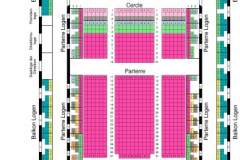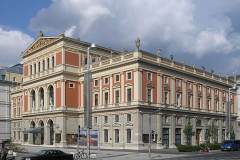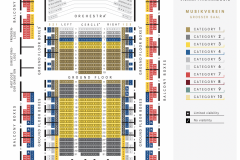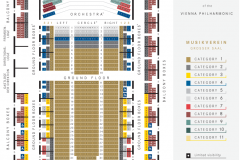New Years Concert Vienna Philharmonic at Musikverein Golden Hall
Mo | Tu | We | Th | Fr | Sa | Su |
We offer tickets for all 3 (three) New Year's Concerts of the Vienna Philharmonic for resale. Resale prices are much higher than production prices.
The Vienna Philharmonic New Year's Concert is one of the most famous New Year's concerts in the world, consisting mainly of musical works from the Strauss dynasty.
In addition to the main concert on January 1st, there are concerts on December 30th and 31st.
Vienna New Year Concert 2024/2025
Conductor: Riccardo Muti
Wiener Philharmoniker
Vienna Boys' Choir
New Year's Concert by the Vienna Philharmonic in the Golden Hall of the Musikverein
Wiener Philharmoniker
Registration for the New Year's Concert of the Vienna Philharmonic Raffle (annually from January 2nd to February 28th): http://www.wienerphilharmoniker.at
The New Year's Concert of the Vienna Philharmonic is the most famous New Year's concert in the world and consists mainly of works by the Strauss dynasty. In addition to the main concert on January 1st, there are also concerts on December 30th and 31st.
Born in a dark period of Austrian history, New Year's concerts reflect people's hopes for better times. Today, this music brings joy and optimism all year round, inspiring millions of people around the world to their core.
For many decades, the Vienna Philharmonic has presented its audience with an interesting program with a rich repertoire of the Strauss dynasty and their contemporaries. You can enjoy this concert not only live by visiting the Vienna Philharmonic, but also live: currently, the New Year's concert is broadcast in 92 countries around the world, which indicates a high level of awareness of the concert and a high level of awareness among listeners home and abroad .
The performance always includes compositions by the Strauss musical dynasty: Johann Strauss I, Johann Strauss II, Josef Strauss and Eduard Strauss, as well as additional compositions by other Austrian composers, including Josef Hellmesberger Jr., Joseph Lanner, Wolfgang Amadeus Mozart, Otto Nicolai (founder of the Vienna Philharmonic ), Emil von Reznicek, Franz Schubert, Franz von Suppé, Carl Michael Zicher. In 2009, the compositions by Joseph Haydn were performed for the first time: "Farewell Symphony" in honor of the 200th anniversary of his death. During the concert, more than a dozen compositions will be performed between works and for encores: waltzes, polkas, mazurkas, marches. A fast polka is often performed as an encore. The second most popular is Johann Strauss II's waltz The Blue Danube (Johann Strauss Jr., Op. 314, 1867), the performance of which is usually interrupted by thunderous applause and New Year's greetings from musicians to the audience. The Radetzky March (Johann Strauss I, op. 228, 1848) traditionally sounds in the final part of the concert. When performing the Radetzky March, the audience traditionally applauds to the beat of the conductor's baton. In 2005, the Radetzky March was not performed because of the commemoration of the victims of the December 26, 2004 tsunami in Asia.
The duration of the concert is about two and a half hours.
Since 1939, concerts have been held in the "Great Hall" (better known as the "Golden Hall") of the Vienna Philharmonic. In the second part of the program, the dancers of the Vienna State Opera Ballet join the orchestra at a certain point in time, and they perform at various well-known concerts in Austria at other times: in Schönbrunn Palace, in Esterhazy Palace, in the Vienna State Opera. In 2011, florists decorated the concert hall with 30,000 flowers. Since 1980, the flowers that decorate the room have been a gift from the Italian city of San Remo, in the Liguria region.
The Austrian television station ORF has been broadcasting the New Year's Concert live since 1959. It has been broadcast in color since 1969. Episodes of the concert are often included in various plots and images. A live performance of a ballet in Schönbrunn Palace will also be broadcast for television viewers. In 2007, the ballet was filmed for the first time in the baroque courtyard garden of the palace, performed by dancers from the Vienna State Ballet, formerly also by dancers from the Vienna State Opera Ballet, the Volksoper, the Bavarian State Opera and other famous guest stars.
Since 2008, the concert has been commentated for the Austrian audience by Barbara Rett, who replaces Ernst Grizesman, who has been commentator for the New Year's Concert for 25 years. There was another innovation in 2010, when ORF broadcast a concert in HD quality and on the Internet for the first time. Special ballet costumes were designed by Valentino for this concert.
Tickets for the New Year's Concert 2020
Prices:
New Year's Concert 01.01.2016, start at 11:15 am, from €35 to €1,250
Seating categories in the Golden Hall of the Vienna Philharmonic:
Category 1 - Ground Floor Rows 4-32; ground floor boxes 1-7, row 1; middle balcony, row 1.
Category 2 - ground floor Rows 2-3, ground floor boxes 1-4, row 2; ground floor boxes 8-9, row 1; Balcony from bed 1-5 on the right, balcony from bed 1-2 on the left, row 1.
Program and cast
Program and cast will be available later
Conductor: Christian Thielemann
With Vienna Philharmonic
Musikverein Golden Hall
This building is located on Dumbastraße/Bösendorferstraße behind the Hotel Imperial near the Ringstraße boulevard and the Wien River, between Bösendorferstraße and Karlsplatz. However, since Bösendorferstraße is a relatively small street, the building is better known as being between Karlsplatz and Kärntner Ring (part of Ringstraße loop). It was erected as the new concert hall run by the Gesellschaft der Musikfreunde, on a piece of land provided by Emperor Franz Joseph I of Austria in 1863. The plans were designed by Danish architect Theophil Hansen in the Neoclassical style of an ancient Greek temple, including a concert hall as well as a smaller chamber music hall. The building was inaugurated on 6 January, 1870. A major donor was Nikolaus Dumba whose name the Austrian government gave to one of the streets surrounding the Musikverein.
Great Hall - Golden Hall
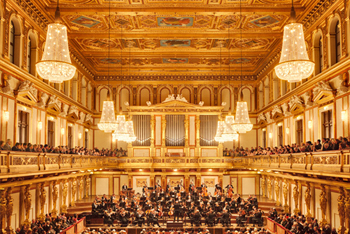 “As high as any expectations could be, they would still be exceeded by the first impression of the hall which displays an architectural beauty and a stylish splendour making it the only one of its kind.” This was the reaction of the press to the opening of the new Musikverein building and the first concert in the Großer Musikvereinssaal on 6 January 1870.
“As high as any expectations could be, they would still be exceeded by the first impression of the hall which displays an architectural beauty and a stylish splendour making it the only one of its kind.” This was the reaction of the press to the opening of the new Musikverein building and the first concert in the Großer Musikvereinssaal on 6 January 1870.
The impression must have been overwhelming – so overwhelming that Vienna’s leading critic, Eduard Hanslick, irritatingly brought up the question of whether this Großer Musikvereinssaal “was not too sparkling and magnificent for a concert hall”. “From all sides spring gold and colours.”
Brahms Hall
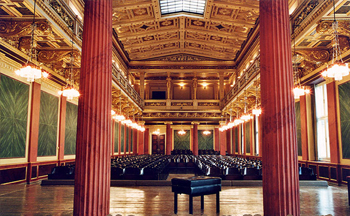 "In order not to promise too much it can be said that it has been made into the most beautiful, most magnificent, perfect example of a chamber concert hall that any of us knows in the world.” This was the reaction of a Vienna daily newspaper in October 1993 as the Brahms-Saal was presented to the public after extensive renovation work.
"In order not to promise too much it can be said that it has been made into the most beautiful, most magnificent, perfect example of a chamber concert hall that any of us knows in the world.” This was the reaction of a Vienna daily newspaper in October 1993 as the Brahms-Saal was presented to the public after extensive renovation work.
The surprise was perfect. It was a completely new hall. In contrast to the Grosse Musikvereinssaal, the Brahms-Saal had changed its appearance quite considerably over the years. When and how it acquired that slightly melancholy duskiness that was known to music lovers before 1993 cannot be precisely documented.
Glass Hall
 As a venue for events from concerts to luxury banquets, the Glass Hall / Magna Auditorium is not only the largest of the Musikverein's 4 new halls but also the most flexible in terms of usage.
As a venue for events from concerts to luxury banquets, the Glass Hall / Magna Auditorium is not only the largest of the Musikverein's 4 new halls but also the most flexible in terms of usage.
Hub podiums enable the smooth transformation of the concert hall into a conference centre, the cinema into a ballroom, or the stage into a catwalk. State-of-the-art equipment for sound, lighting, video and widescreen digital projection provide the ideal conditions for half-scenic productions.
The Glass Hall / Magna Auditorium was designed by the Viennese architect Wilhelm Holzbauer. With a height of 8 metres, the hall (including the gallery) can play host to up to 380 visitors.

 EN
EN DE
DE IT
IT FR
FR ES
ES RU
RU JP
JP RO
RO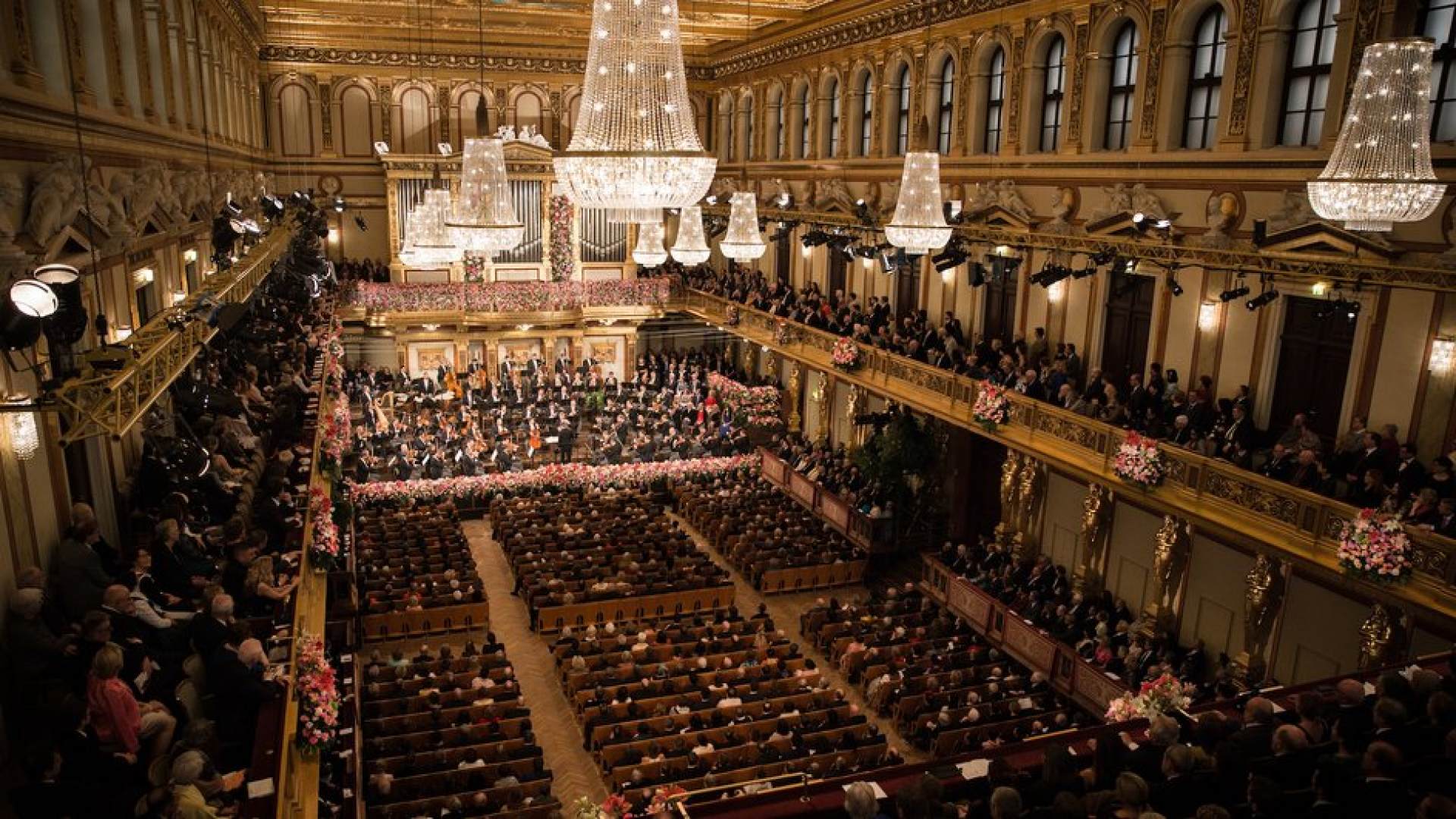
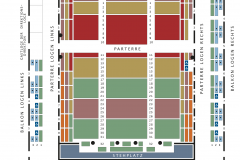 Seating plan
Seating plan 
